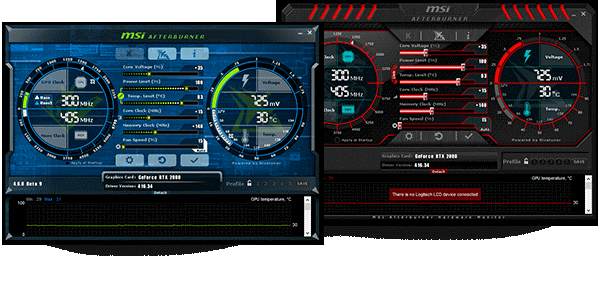
Yesterday, we reported that MSI Afterburner's development is in jeopardy due to western sanctions against Russia, which has prevented MSI from paying Unwinder for maintaining their MSI Afterburner software. MSI Afterburner is developed by Alexey Nicolaychuk, who is known as "Unwinder" online, a Russian national who has been in charge of the applications development and is the developer being RivaTuner Statistics Server. MSI Afterburner is one of the world's most popular GPU overclocking utilities, being commonly used by PC gamers regardless of their GPU's manufacturer.


There are ways around those as well, but that will not be covered in this guide.MSI plans to continue supporting MSI Afterburner, despite difficulties. Note that the first three caveats above still hold. The method in this guide eliminates this caveat and produces the following result instead: GPU core clock remains locked at the value you set it at, but core voltage will increase in response to higher temperatures. For example, there may be 15MHz drops every 10C.Ĭaveat 4 is probably the most obnoxious limitation. There are 15MHz core clock frequency drops at certain temperature thresholds, which are BIOS-specific. If the graphic's card temperature limit is reached, the GPU core clock will throttle downwards to keep the temperature below the limit. Things are a bit more complicated with Ampere, as there are multiple power limits aside from the one you see advertised, which refers to total board power draw. This is usually associated with drops in core voltage as well. If the graphics card's power limit is reached, the GPU core clock will throttle downwards to keep the power draw below the limit. In most cases, the highest you will achieve is 1.05-1.063V unless you increase the voltage slider to 100% in MSI Afterburner and manually tune the VF curve. There is a voltage limit associated with Nvidia graphics cards, which is usually around 1.093-1.100V. In particular, it will boost as high as it can up the VF curve with a few caveats: In its current form, Nvidia's GPU Boost will set a GPU's core clock frequency according to the voltage-frequency (VF) curve, which can be observed using MSI Afterburner and other GPU overclocking software. In this guide, I will describe a method to "override" Nvidia's GPU Boost algorithm and lock to a particular frequency.


 0 kommentar(er)
0 kommentar(er)
